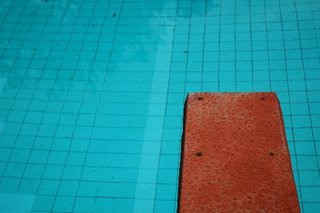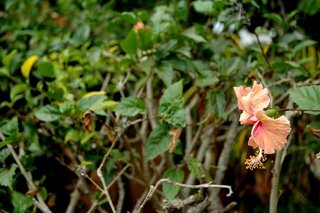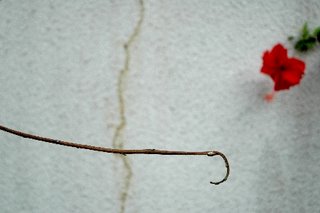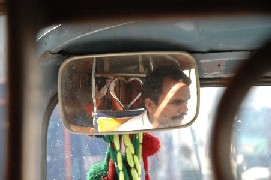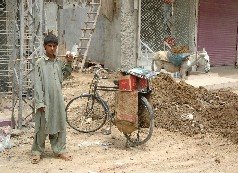The world outside of the factory compound is dangerous, specially when we're carrying a reflex camera with dimensions difficult to hide. Apart from the potential assaults and aggressions, the inhabitants of Lagos are known for disliking being photographed and for reacting sometimes violently to the presence of a camera. Therefore I cannot have the pleasure of repeating experiences such as the one in Lahore. However, I wanted to record in images the closure experience in this factory compound.
During the weekends we stay at the guest house area of the compound. It's a small corner, where there are eight houses, spread out between grass gardens and covered by small but opened trees. To compensate the closure, there is a pool and a tennis court. It's not a vast or diversified space that can present several motifs. The residents are occidentals and in their free days they rest inside their houses, or they kill their time in the production line "finishing some points left from the week". The few workers that keep the place only come for small fractions of the day, they try to get unnoticed and the try keeping an European behaviour to please the "sirs". It's then a place where it is difficult to find things to take photos of. I thought I needed specific themes. I thought three themes, with four pictures per theme would be enough. But in some way they had to have a Nigerian mark.
I wandered several times around in the search for Nigerian marks, but everything looked the European way. No doubt the vegetation is different, but I'm sure the photographers of National Geographic have already documented it extensively. I had then to find another way of introducing the Nigerian factor in this work.
I then asked for the assistance of Nigerian two cooks and one helper that work in the guest houses. I asked each one of them to tell me a theme, but without referring that it would be to take photos. "A theme?", Duba asked me confused. "Yes, a theme, a topic", I complemented, without going into further details. He asked me for some time to think about it, and after some hours he handed a paper over to me where we had written "Capacity building in the food industry". I was surprised, afterwards disappointed and in the end unmotivated, because I had no clue about how was I going to photograph such a theme. But I kindly accepted it, not to reject something that the man had prepared with such a dedication. Later I concluded that Duba had probably thought that I needed a theme for the work at the factory, and in fact for that capacity is a very pertinent theme. I thought it would be highly improbable that the helper would have the same thinking, and I did the request to him in the same manner. He also asked for some time to think, and he also gave me afterwards a piece of paper, where this time was written "How and why to use performance indicators". The theme was once again important for the factory, but it became too difficult for my plans. I gently accepted again. At the third request, I added that it could be any type of theme, "related to work or not", and I insisted that Prince said the first theme that occurred to him. He told me about "Despair", and I was relieved.
The concept had been established since the beginning: I would shout about what they indicated me, and I create four photos per theme. I had then to take the themes as a challenge. I did a lot of tours around the guest houses in different days, I took hundreds of photos, I analysed them, I choose them and I retouched them, until I completed my portfolio, that I will leave here for you in three different posts, one per theme.
 Eduardo Fonseca Joaquim Why and how to use performance indicators I, Maio 2006
Eduardo Fonseca Joaquim Why and how to use performance indicators I, Maio 2006 Eduardo Fonseca Joaquim, Why and how to use performance indicators II, Maio 2006
Eduardo Fonseca Joaquim, Why and how to use performance indicators II, Maio 2006 Eduardo Fonseca Joaquim, Why and how to use performance indicators III, Maio 2006
Eduardo Fonseca Joaquim, Why and how to use performance indicators III, Maio 2006 Eduardo Fonseca Joaquim, Why and how to use performance indicators IV, Maio 2006
Eduardo Fonseca Joaquim, Why and how to use performance indicators IV, Maio 2006